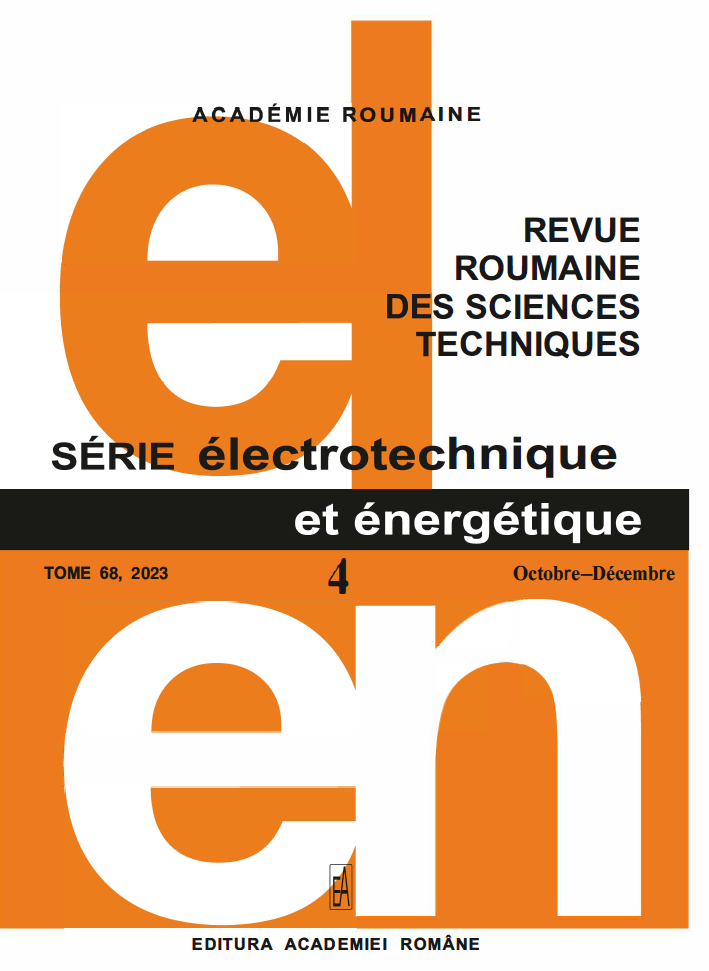COMPARISON OF INDUCTIVE AND CAPACITIVE COUPLINGS USED TO CLOSE THE FEEDBACK LOOP USED IN SWITCH MODE POWER SUPPLIES
DOI:
https://doi.org/10.59277/RRST-EE.2023.4.7Keywords:
Capacitive coupling, Inductive coupling, Flyback, Switch mode power supply, Reaction loopAbstract
Switching mode power supplies are widely used to power various electronic equipment and are adaptable to technical requirements. Switching power supplies use average switching frequencies in the kHz-MHz range generated by the internal frequency generator. Switching mode power supplies use one or more feedback reaction loops to stabilize the parameters the connected load requires. We physically realized two switching power supplies using flyback topology to measure the parameters of the two types of couplings, inductive and capacitive. In this article, we presented a comparison of the parameters of the two reaction loops and an analysis of the two modules that make up the reaction loop.
References
(1) S. Zeltner, Insulating IGBT driver with PCB integrated capacitive coupling elements, International Conference on Integrated Power Electronics Systems (CIPS), pp. 1–6 (16–18 March 2010).
(2) A. Allioua, G. Griepentrog, M. Vogel, J. Eitler, N. Mahdavi, Design of PCB-based planar coil inductive coupler, IEEE Annual Southern Power Electronics Conference (SPEC), pp. 1–8 (6–9 Dec. 2021).
(3) M. Mostak, S. Kwak, S. Choi, Core design for better misalignment tolerance and higher range of wireless charging for HEV, Annual IEEE Conference on Applied Power Electronics Conference and Exposition (APEC), pp. 1748–1755 (12 May 2016).
(4) C.P. Zheng, N.Y. Dai, M.C. Wong, C.K. Wong, M. Zhu, Capacitive-coupling inverter for PV integration: Analysis and implementation. Proceedings of the 2014 9th IEEE Conference on Industrial Electronics and Applications (ICIEA), pp. 666–671 (2014).
(5) J. Xiong, T. Wei, T. Luo, Q. Tan, C. Xue, J. Liu, W. Zhang, Coupling influence on signal readout of a dual-parameter LC resonant system, Advances in Mathematical Physics, pp. 1–9. (2015).
(6) J. Zhang, S. Yao, L. Pan, Y. Liu, C. Zhu, Chunbo. A review of capacitive power transfer technology for electric vehicle applications. Electronics. 12, p. 3534 (2023).
(7) P. Athira, T.Z. Ang, M. Salem, Mohamed, Resonant inductive coupling for wireless power transmission. International Journal of Energy and Power Systems, 2. Pp. 1–5 (2022).
(8) H. Sridharan, S. Ramalingam, J. Arumugam, Wide boost ratio in quasi-impedance network converter using switch voltage spike reduction technique, Rev. Roum. Sci. Techn.– Électrotechn. et Énerg. 68, 3, pp. 259–265 (2023).
Downloads
Published
Issue
Section
License
Copyright (c) 2023 REVUE ROUMAINE DES SCIENCES TECHNIQUES — SÉRIE ÉLECTROTECHNIQUE ET ÉNERGÉTIQUE

This work is licensed under a Creative Commons Attribution-NonCommercial-NoDerivatives 4.0 International License.


